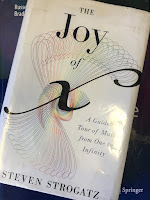Myocardial cells are typically about 10 μm in diameter and 100 μm long. They have the added complication that they are connected to one another by gap junctions, as shown schematically in Fig. 7.27. This allows currents to flow directly from one cell to another without flowing in the extracellular medium. The bidomain (two-domain) model is often used to model this situation [Henriquez (1993)]. It considers a region, small compared to the size of the heart, that contains many cells and their surrounding extracellular fluid.The citation is to the 20-year-old-but-still-useful review article by Craig Henriquez of Duke University.
Henriquez, C. S. (1993) “Simulating the electrical behavior of cardiac tissue using the bidomain model,” Crit. Rev. Biomed. Eng., Volume 21, Pages 1–77.According to Google Scholar, this landmark paper has been cited over 450 times (including a citation on page 202 of IPMB).
During the early 1990s I collaborated with another researcher from Duke, Natalia Trayanova. Our goal was to apply the bidomain model to the study of defibrillation of the heart. In the same year that Craig’s review appeared, Trayanova, her student Lisa Malden, and I published an article in the IEEE Transactions on Biomedical Engineering titled “The Response of the Spherical Heart to a Uniform Electric Field: A Bidomain Analysis of Cardiac Stimulation” (Volume 40, Pages 899–908). I’m fond of this paper for several reasons:
- Like most physicists, I like simple models that highlight and clarify basic mechanisms. Our spherical heart model had that simplicity.
- The article was the first to show that fiber curvature provides a mechanism for polarization of cardiac tissue in response to an electrical shock. Since our paper, researchers have appreciated the importance of the fiber geometry in the heart when modeling electrical stimulation.
- The model emphasizes the role of unequal anisotropy ratios in the bidomain model. In cardiac tissue, both the intracellular and extracellular spaces are anisotropic (the electrical conductivity is different parallel to the myocardial fibers then perpendicular to them), but the intracellular space is more anisotropic than the extracellular space. Fiber curvature will only result in polarization deep in the heart wall if the tissue has unequal anisotropy ratios.
- The calculation has important clinical implications. Fibrillation of the heart is a leading cause of death in the United States, and the only way to treat a fibrillating heart is to apply a strong electric shock: defibrillation. I’ve performed a lot of numerical simulations in my career, but none have the potential impact for medicine as my work on defibrillation.
- The IEEE TBME publishes brief bios of the authors. Back in those days I published in this journal often, and my goal was to have my entire CV included, bit by bit, in these small bios. The one in this paper read “Bradley J Roth was raised in Morrison, Illinois. He received the BS degree in physics from the University of Kansas in 1982, and the PhD in physics from Vanderbilt University in 1987. His PhD dissertation research was performed in the Living State Physics Laboratory under the direction of Dr. J. WIkswo. He is now a Senior Staff Fellow with the Biomedical Engineering and Instrumentation Program, National Institutes of Health, Bethesda, MD. One of this research interests is the mathematical modeling of the electrical behavior of the heart. He is also interested in the production and interactions of magnetic fields with biological tissue, e.g. biomagnetism, magnetic stimulation, and magnetoacoustic imaging.”
- The acknowledgments state “the authors thank B. Bowman for his assistance in editing the manuscript.” Barry was a great help to me in improving my writing skills during my years at NIH, and I’m glad that we mentioned him.
- The paper cites several of my favorite books, including When Time Breaks Down by Art Winfree, Classical Electrodynamics by John David Jackson, and Handbook of Mathematical Functions with Formulas, Graphs, and and Mathematical Tables, by Abramowitz and Stegun.
- The paper has been fairly influential. It’s been cited 97 times, which is small potatoes compared to Henriquez’s review, but not too shabby nevertheless; an average of almost five citations a year for 20 years.
- It was a pleasure to collaborate with Natalia Trayanova, who I was to work with again seven years later on another study of cardiac electrical behavior (Lindblom, Roth, and Trayanova, Journal of Cardiovascular Electrophysiology, Volume 11, Pages 274–285, 2000).
- The paper led to subsequent simulations of defibrillation that are much more realistic and sophisticated than our simple spherical model of twenty years ago. Trayanova has led the way in this research, first at Duke, then at Tulane, and now at Johns Hopkins. You can listen to her discuss her research here. If you have a subscription to the Journal of Visualized Experiments you can hear more here. For a recent review, see Trayanova et al. (2012). Also, see this article recently put out by Johns Hopkins University.
Listen to Natalia Trayanova discuss developing computer simulations to improve arrhythmia treatments.
 |
| Cardiac Bioelectric Therapy: Mechanisms and Practical Implications. |



